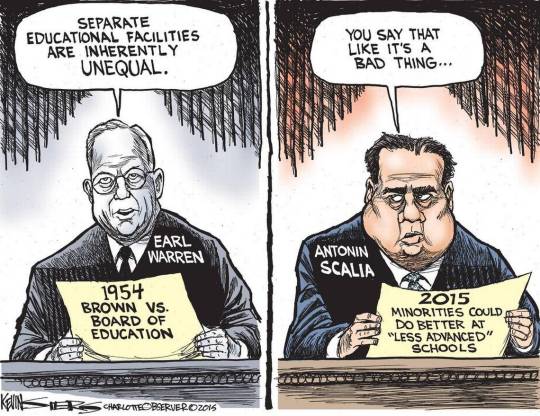#kevin siers
Text

Like Trump, Putin talks big but is basically a wimpy bully. The weekend mutiny showed the world that Putin's support inside Russia is more shallow than many observers believed.
Give Joe Biden credit for calling Putin's bluff. Being 80 years old does have some advantages; Biden was a college student when John F. Kennedy stood up to Nikita Khrushchev and Fidel Castro in the 1962 Cuban missile crisis.
Having a living memory of Russian geopolitical behavior spanning many decades has led to Biden making informed choices regarding Ukraine.
#invasion of ukraine#russia#vladimir putin#mutiny#attempted coup#yevgeny prigozhin#putin's weakness#the wagner group#kevin siers#joe biden#calling putin's bluff#россия#владимир путин#путин хуйло#мятеж#евгений пригожин#чвк вагнер#путин – это лжедмитрий iv а не пётр великий#слабость путина#джо байден#вторгнення оркостану в україну#україна переможе#слава україні!#героям слава!
10 notes
·
View notes
Text

LETTERS FROM AN AMERICAN
June 29, 2023
HEATHER COX RICHARDSON
JUN 30, 2023
Today the Supreme Court handed down a decision in Students for Fair Admissions, Inc., v. President and Fellows of Harvard College. Students for Fair Admissions is an organization designed to fight against affirmative action in college admissions, and today it achieved its goal: the Supreme Court decided that policies at Harvard and the University of North Carolina that consider race as a factor in admissions are unconstitutional because they violate the guarantee of equal protection before the law, established by the Fourteenth Amendment.
The deciding votes were 6 to 2 in the case of Harvard—Justice Ketanji Brown Jackson recused herself because she had been a member of Harvard’s board of overseers—and 6 to 3 in the case of the University of North Carolina.
In the case of the two schools at the center of this Supreme Court decision, admissions officers initially evaluated students on a number of categories. Harvard used six: academic, extracurricular, athletic, school support, personal, and overall. Then, after the officers identified an initial pool of applicants who were all qualified for admission, they cut down the list to a final class. At Harvard, those on the list to be cut were evaluated on four criteria: legacy status, recruited athlete status, financial aid eligibility, and race. Today, the Supreme Court ruled that considering race as a factor in that categorical fashion is unconstitutional.
The court did not rule that race could not be considered at all. In the majority decision, Chief Justice John Roberts wrote that “nothing in this opinion should be construed as prohibiting universities from considering an applicant’s discussion of how race affected his or her life, be it through discrimination, inspiration, or otherwise.”
How much this will matter for colleges and universities is unclear. Journalist James Fallows pointed out that there are between 3,500 and 5,500 colleges in the U.S. and all but 100 of them admit more than 50% of the students who apply. Only about 70 admit fewer than a third of all applicants. That is, according to a study by the Pew Research Center, “the great majority of schools, where most Americans get their postsecondary education, admit most of the people who apply to them.”
The changing demographics of the country are also changing student populations. As an example, in 2022, more than 33% of the students at the University of Texas at Austin, which automatically admits any Texas high school student in the top 6% of their class, were from historically underrepresented populations. And universities that value diversity may continue to try to create a diverse student body.
But in the past, when schools have eliminated affirmative action, Black student numbers have dropped off, both because of changes in admission policies and because Black students have felt unwelcome in those schools. This matters to the larger pattern of American society. As Black and Brown students are cut off from elite universities, they are also cut off from the pipeline to elite graduate schools and jobs.
More is at stake in this case than affirmative action in university admissions. The decision involves the central question of whether the law is colorblind or whether it can be used to fix long-standing racial inequality. Does the Fourteenth Amendment, ratified in 1868 to enable the federal government to overrule state laws that discriminated against Black Americans, allow the courts to enforce measures to address historic discrimination?
Those joining the majority in the decision say no. They insist that the framers of the Fourteenth Amendment after the Civil War intended only that it would make men of all races equal before the law, and that considering race in college admissions undermines that principle by using race in a negative manner, involving racial stereotyping (by considering race by category), and lacking an endpoint. “Many universities have for too long wrongly concluded that the touchstone of an individual’s identity is not challenges bested, skills built, or lessons learned, but the color of their skin. This Nation’s constitutional history does not tolerate that choice,” the majority opinion reads.
In a concurring opinion, Justice Clarence Thomas wrote that affirmative action actually made racial tensions worse because it “highlights our racial differences with pernicious effect,” prolonging “the asserted need for racial discrimination.” He wrote: “under our Constitution, race is irrelevant.” “The great failure of this country was slavery and its progeny,” Thomas wrote. “And, the tragic failure of this Court was its misinterpretation of the Reconstruction Amendments.”
Those justices who dissented—Justices Sonia Sotomayor, Elena Kagan, and Ketanji Brown Jackson—pointed to the profound racial discrimination that continued after the Civil War and insist that the law has the power to address that discrimination in order to achieve the equality promised by the Fourteenth Amendment. “The Equal Protection Clause of the Fourteenth Amendment enshrines a guarantee of racial equality,” Sotomayor’s opinion begins. “The Court long ago concluded that this guarantee can be enforced through race-conscious means in a society that is not, and has never been, colorblind.”
In her concurring opinion concerning the UNC case, Jackson noted that “[g]ulf-sized race-based gaps exist with respect to the health, wealth, and well-being of American citizens. They were created in the distant past, but have indisputably been passed down to the present day through the generations. Every moment these gaps persist is a moment in which this great country falls short of actualizing one of its foundational principles—the ‘self-evident’ truth that all of us are created equal.”
If this fight sounds political, it should. It mirrors the current political climate in which right-wing activists reject the idea of systemic racism that the U.S. has acknowledged and addressed in the law since the 1950s. They do not believe that the Fourteenth Amendment supports the civil rights legislation that tries to guarantee equality for historically marginalized populations, and in today’s decision the current right-wing majority on the court demonstrated that it is willing to push that political agenda at the expense of settled law. As recently as 2016, the court reaffirmed that affirmative action, used since the 1960s, is constitutional. Today’s court just threw that out.
The split in the court focused on history, and the participants’ anger was palpable and personal. Thomas claimed that “[a]s [Jackson] sees things, we are all inexorably trapped in a fundamentally racist society, with the original sin of slavery and the historical subjugation of black Americans still determining our lives today.” Her solution, he writes, “is to unquestioningly accede to the view of elite experts and reallocate society’s riches by racial means as necessary to ‘level the playing field,’ all as judged by racial metrics…. I strongly disagree.”
Jackson responded that “Justice Thomas’s prolonged attack…responds to a dissent I did not write in order to assail an admissions program that is not the one UNC has crafted.”
She noted that Black Americans had always simply wanted the same right to take care of themselves that white Americans had enjoyed, but it had been denied them. She recounted the nation’s long history of racial discrimination and excoriated the majority for pretending it didn’t exist. “With let-them-eat-cake obliviousness, today, the majority pulls the ripcord and announces ‘colorblindness for all’ by legal fiat. But deeming race irrelevant in law does not make it so in life. And having so detached itself from this country’s actual past and present experiences, the Court has now been lured into interfering with the crucial work that UNC and other institutions of higher learning are doing to solve America’s real-world problems.”
“Today, the Supreme Court upended decades of precedent that enabled America’s colleges and universities to build vibrant diverse environments where students are prepared to lead and learn from one another,” the Biden administration said in a statement, warning that “the Court’s decision threatens to move the country backwards.” In a speech to reporters, Biden called for new standards that take into consideration the adversity—including poverty—a student has overcome when selecting among qualified candidates, a system that would work “for everyone… from Appalachia to Atlanta and far beyond.”
“While the Court can render a decision, it cannot change what America stands for.”
—
LETTERS FROM AN AMERICAN
HEATHER COX RICHARDSON
#Kevin Siers#history#Brown vs Board of Education#minorities#racism#injustice#affirmative action#heather cox richardson#Letters From An American
7 notes
·
View notes
Text

Cartoon by Kevin Siers
#Right Wing Extremism#right wing terrorism#RejectGOPFascism#Cult45#Republicons#maga morons#recall every republican#trumpcult
6 notes
·
View notes
Text
LOTD: Cloch Point
~sorry for delay - meant for May 23rd, 2023~
(from: http://www.ibiblio.org/lighthouse/sctsw.htm)
Cloch Point
1797 (John Clarkson and Thomas Smith). Active; focal plane 24 m (79 ft); white flash every 3 s. Approx. 14 m (46 ft) round cylindrical stone tower attached to 1-1/2 story stone keeper's house. Buildings painted white; tower has a single narrow black horizontal band. The keeper's house was sold as a private residence. Thomas Nugent's photo is at the top of this page, Trabas has a good closeup photo by Arno Siering, Kevin Cotterell has a 2008 photo, Wikimedia has several photos, Huelse has a historic postcard view, and Google has a street view and a satellite view. This historic light station marks a right-angle curve in the Clyde, where the estuary turns from north to east for ships bound for Glasgow. In 2021 the private owners renovated the keeper's house and restored two partially-ruined outbuildings, creating a modern residence. Located just off the A770 highway about 3 km (2 mi) west of Gourock, directly across the Clyde from Dunoon. Site open, tower closed. Operator: Clydeport. Site manager: private. . ARLHS SCO-047; Admiralty A4404; NGA 4404.

(full photo found here; ©Joy Tubby)
0 notes
Photo

My new thing is supporting editorial cartoonists. This one is from Kevin Siers of the Charlotte Observer.
386 notes
·
View notes
Photo

#AmyConeyBarrett answers all: https://t.co/1rIM1t4OUF @ObserverOpinion #SCOTUShearings pic.twitter.com/ew7HKUL13D
— Kevin Siers (@KevinSiers) October 14, 2020
1 note
·
View note
Photo

Apparently we’re experiencing another outburst of false equivalence with a heavy dose of bothsiderism.

Of course there’s no such thing as nuance in politics — so.... 😑
But Trump Republicans and their cheerleaders at News Corp. should worry about when attention shifts back to Trump shipping nuclear secrets 992 miles from the White House to his Mar-a-Lago hideaway.
#classified documents#joe biden#donald trump#false equivalence#bothsiderism#department of justice#kevin siers
27 notes
·
View notes
Text

Kevin Siers cartoon: Unaffirming Action | Charlotte Observer
* * * *
IT'S NOT AS BAD AS "PLESSY V FERGUSON" (MAYBE) - THE END OF AFFIRMATIVE ACTION
TCINLA
JUN 29, 2023
The Supreme Court ruled Thursday that race-conscious admissions programs at Harvard and the University of North Carolina are unconstitutional, once again demonstrating this court’s complete disregard of stare decisis as they overturned decades of precedent and three previous SCOTUS decisions that ruled the exact opposite way.
“Harvard’s and UNC’s admissions programs violate the Equal Protection Clause of the Fourteenth Amendment,” Chief Justice John Roberts wrote for the majority. This harkens back to the way the Court used the Fourteenth Amendment prior to the court revolution in 1936 to declare corporations “persons” and to rule in the exact opposite to what the amendment meant in the “due process” clause.
Justice Sotomayor took direct aim at the majority for feigning colorblindness in a way that will inevitably drain colleges and universities of minority students.
“The Court cements a superficial rule of colorblindness as a constitutional principle in an endemically segregated society where race has always mattered and continues to matter,” she writes. “The Court subverts the constitutional guarantee of equal protection by further entrenching racial inequality in education, the very foundation of our democratic government and pluralistic society.”
Justice Sotomayor was clear in her dissent: “The devastating effect of this decision cannot be overstated.” She continued, “Equal educational opportunity is a prerequisite to achieving racial equality in our nation,” adding, “The court’s precedents authorizing a limited use of race in college admissions are not just workable — they have been working.” She said that, by upsetting the existing framework, the court had established “a set of novel restraints that create troubling equal protection problems and share one common purpose: to make it impossible to use race in a holistic way in college admissions, where it is much needed.”
Justice Sonia Sotomayor has credited affirmative action with opening the door for her to attend elite universities. “I am a product of affirmative action,” she has said. In her dissent, she pushed back against Justice Thomas, writing: “The Equal Protection Clause of the 14th Amendment enshrines a guarantee of racial equality. The court long ago concluded that this guarantee can be enforced through race-conscious means in a society that is not, and has never been, colorblind.”
She emphasized her view that the “limited use of race has helped equalize educational opportunities for all students of every race and background and has improved racial diversity on college campuses.” She said that “progress has been slow and imperfect,” but that “race-conscious college admissions policies have advanced the Constitution’s guarantee of equality and have promoted Brown’s vision of a nation with more inclusive schools.”
She becomes particularly sharp when knocking down the majority’s characterization of the Brown v. Board of Education litigation. “The Court’s recharacterization of Brown is nothing but revisionist history and an affront to the legendary life of Justice Marshall, a great jurist who was a champion of true equal opportunity, not rhetorical flourishes about colorblindness.”
During some of her more scathing criticism which she read from the bench, Justice Thomas, who sits directly to her left, fidgeted with his glasses, and Chief Justice Roberts shot her periodic glances. Toward the end, she said several times that the pursuit of racial equality would go on “despite the court.” She concluded, “Society’s progress toward equality cannot be permanently halted.”
Roberts spent considerable time critiquing the liberals’ dissents, at one point saying of Sotomayor’s position that the programs should continue: “That is a remarkable view of the judicial role - remarkably wrong.”
But it’s Justice Jackson’s dissent that speaks the loudest to anyone who is truly listening. She begins by writing: “Gulf-sized race-based gaps exist with respect to the health, wealth, and well-being of American citizens. They were created in the distant past, but have indisputably been passed down to the present day through the generations. Every moment these gaps persist is a moment in which this great country falls short of actualizing one of its foundational principles—the ‘self-evident’ truth that all of us are created equal.” “With let-them-eat-cake obliviousness, today, the majority pulls the ripcord and announces ‘colorblindness for all’ by legal fiat,” she writes. And then, her ringing criticism of the majority: “Deeming race irrelevant in law does not make it so in life.”
While the majority knocked down the schools’ use of race as one of many factors in determining eligibility, Roberts allowed for some consideration of applicants’ race in the process:
“Nothing prohibits universities from considering an applicant’s discussion of how race affected the applicant’s life, so long as that discussion is concretely tied to a quality of character or unique ability that the particular applicant can contribute to the university.”
Sotomayor dismissed Roberts’ attempt to project moderation, calling it a “false promise to save face.” “No one is fooled,” she wrote.
Michelle Obama wrote in a statement, “My heart breaks for any young person out there who’s wondering what their future holds — and what kinds of chances will be open to them.” She noted that as one of the few Black students at her college, “I sometimes wondered if people thought I got there because of affirmative action. It was a shadow that students like me couldn’t shake.” But she said affirmative action “helped offer new ladders of opportunity for those who, throughout our history, have too often been denied a chance to show how fast they can climb.”
President Obama also issued a statement: “Like any policy, affirmative action wasn’t perfect. But it allowed generations of students like Michelle and me to prove we belonged. Now it’s up to all of us to give young people the opportunities they deserve — and help students everywhere benefit from new perspectives.”
After the Court surprised us all in recent weeks with decisions that supported democracy by keeping the Voting Rights Act Section 2 alive, people wondered if perhaps the court was reacting to the overwhelmingly negative public reaction to Dodd, where for the first time ever, the court took away a constitutional right, coupled with the negative publicity about Clarence Thomas and Samuel Alito and the Billionaire Boys Club, and might be returning to “reasonable” decisions.
This decision on affirmative action shows where this court is at. If there is any shift on the Court, that shif is that it is pulling back from giving goodies to every rightwing idiot who has an ideological fixation and servicing every electoral need of the Republican Party. The blowback and backlash may have made the costs of that kind of bust-out jurisprudence too high. Rather, this court will now concentrate on the core stuff they really care about. Affirmative action has been one of the central half dozen fixations that the conservative judicial movement has cared about for decades. They have the power to get rid of it and they did it. It’s that simple, and so long as this 6-3 majority exists with half of them being far right wingnuts (Thomas, Alito and Gorsuch), they will take their opportunities to achieve their lifelong dreams whenever they find them. Depend on it.
While the majority knocked down the schools’ use of race as one of many factors in determining eligibility, Roberts allows for some consideration of applicants’ race in the process.
“Nothing prohibits universities from considering an applicant’s discussion of how race affected the applicant’s life, so long as that discussion is concretely tied to a quality of character or unique ability that the particular applicant can contribute to the university.”
As President Biden and several others pointed out today in response to this decision, “Affirmative Action” has never meant what the Right has always claimed it does, that it is a way of giving places to the unqualified “Others” rather than to the “Qualified Applicant.” In fact, every applicant has to meet the school’s admissions standards in terms of grades and other factors. Affirmative Action has meant making the playing field fair for all those who are qualified to step onto that field.
“Affirmative action” has always existed, and here is how I know it will work in my own family three years from now:
My nephew has been interested in the space program for as long as he’s known about it. He looks at the space program the way I look at airplanes. When he was nine, he met Buzz Aldrin and engaged him in a 30-minute conversation about Apollo-11, that had Aldrin interested for every minute. It was around then that he declared he wants to go to Cal Tech.
Cal Tech is an extremely competitive school to get into, no matter who you are.
And so, when it comes time for him to make his application, his uncle - who happens to be very well-known in the fields he is involved in - will arrange a meeting with a fellow scale modeler and old friend for the past 30 years. This old friend is Ed Henry, who was team leader for the JPL Mars Lander program that sent Spirit and Opportunity to the red planet, where they lasted years longer than expected or planned. Ed’s a legend at Cal Tech/JPL. A letter of recommendation from him will Mean Something. With the grades he gets, and all the other things he does, my nephew will have a good shot at going to Cal Tech, and the Space Program will benefit from having another brilliant mind join the ranks of brilliant minds.
Notice how that works: talented young student has a relative who knows someone through “non-standard means” who can provide extraordinary help to achieve goal. That’s the way it has always worked, traditionally.
Nowadays, due to 50 years of Affirmative Action, some bright young black student whose family lives here in Baldwin Hills might just happen to have an Uncle (or an Aunt!) who went to Cal Tech, who knows Ed Henry, and might also be able to put things together for a similar letter of recommendation. And another brilliant young mind will join the others.
But what about some bright young black student whose family lives in Watts? Fat chance anybody that kid knows knows anybody who’s even heard of Ed Henry.
And “Affirmative Action” will continue to work for those for whom it has always worked. The ones who don’t actually need the help. And the class-based nature of Success in America will continue to operate as it has.
[Thats Another Fine Mess]
5 notes
·
View notes
Photo

#editorial cartoons#Kevin Siers#brett kavanaugh#law#so-called president#Lyin' Donnie Dotard#tRUmp#SCOTUS#Supreme Court#confirmation#political cartoon
125 notes
·
View notes
Photo








(via CSotD: Eemergginsy! Everyboddy to get from strit! The Daily Cartoonist)
#@dailycartoonist#Jeff Stahler#Clay Bennett#Brendan Loper#steve Sack#Steve Benson#Kevin Siers#Pat Bagley#Gary Clement#editorial cartoon#2019#national emergency#border wall
3 notes
·
View notes


